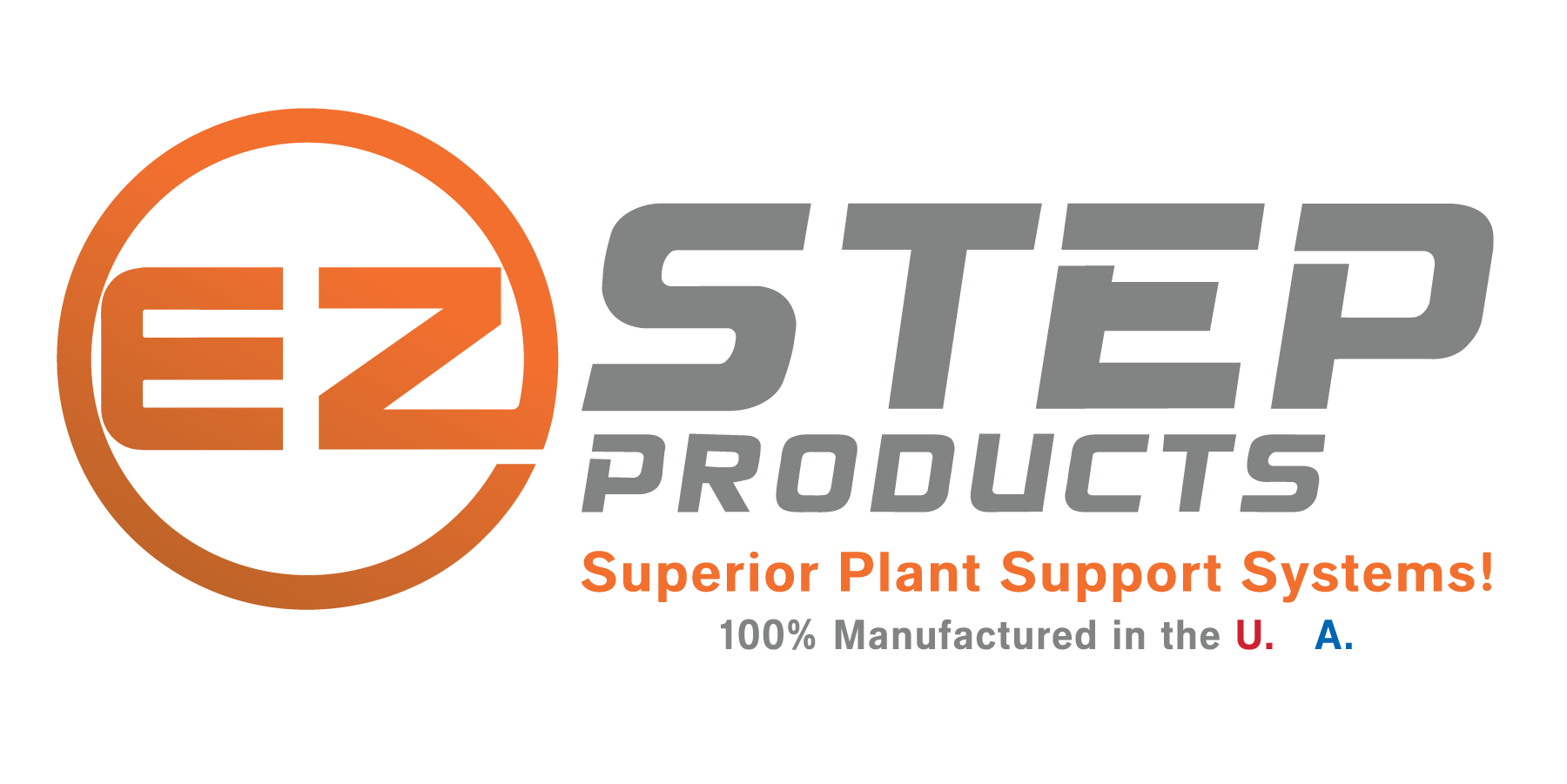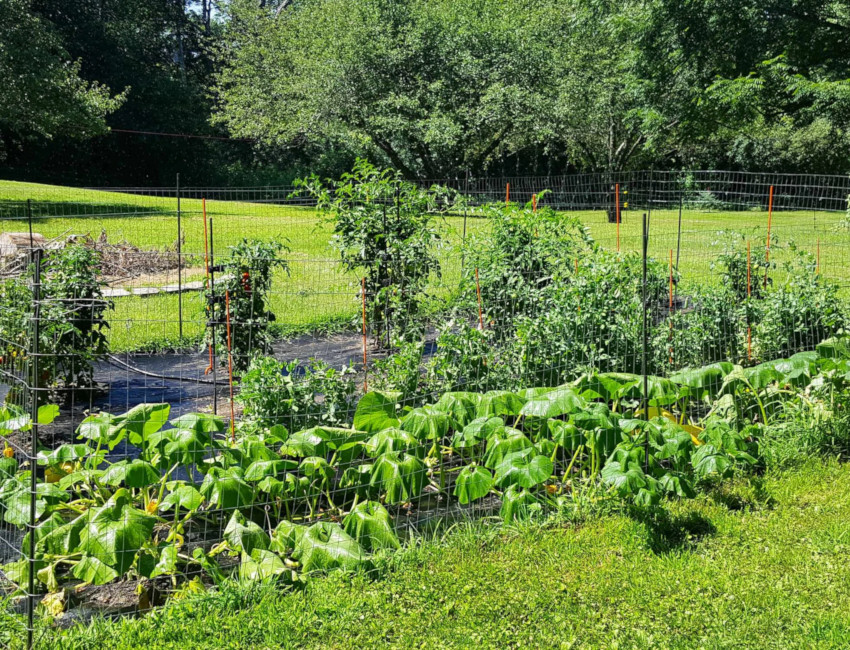Gardeners, especially those new to this activity, often have questions about whether to support a plant. Some crops need this additional help, but not all do. Sadly, seed packets don’t always share this information, which may lead to crop loss because the plants required support that they didn’t have. Knowing the plants that need support remains critical to ensure this does not happen.
A person doesn’t need to guess when it comes to knowing the plants that should be staked. Expert gardeners willingly share this information, so all a person needs to do is ask. However, the following guide summarizes which plants benefit from additional support and when stakes, cages, and other supports aren’t needed. Before sharing this information, it is first best to explain why a plant may not stand independently.
Why Plants Need Support to Grow
If a plant needs support and does not receive this help, it may become deformed. Any deformity puts the plant more at risk of disease and pests, and the misshapen plant could choke out other crops. Therefore, a gardener must know why plants need support and which ones require this help. No gardener wants to see their hard work wasted because they didn’t take this simple step.
Certain plants that need support require this help because the stems may snap under the weight of the fruit or flower head. The support prevents the plant from falling over or flopping down to the ground. Some plants grow to a height that the stem cannot support, while plants may struggle to remain standing in strong winds. Supports help to minimize or eliminate these issues, so the plant can grow and thrive.
Gardeners often discover supporting a plant offers additional benefits. For instance, a person finds they can increase the growing space by training crops to grow upward rather than out. Each plant grown in this manner takes up less ground space, so that the gardener can enjoy a larger harvest.
Support Options
Once a person knows the plants that need support, they must then determine which type of plant supports to buy. A person doesn’t need to spend a lot of money to provide their crops with this help. Many people purchase trellises, cages, or stakes to provide this assistance. However, recycled items work when nothing else is available.
Plants That Should Be Staked
With plants that should be staked, certain ones immediately come to mind. A good example of a plant that requires staking is the tomato. However, it is not the only one that needs support. The following list provides examples of plants that need support.
Tomatoes
This plant appears to be very sturdy during the early stages of growth. Suddenly, the plant will topple because of the weight of the tomatoes. The stakes prevent the plant and fruits from touching the ground.
If the fruit touches the soil, fruit rot occurs. This rot could ruin the entire crop. In addition, the tomatoes need foliage to protect them from the sun. Countless people don’t know that tomatoes can get sunburned just as humans can. Staking the plant prevents this from happening.
Gardeners need to use stakes or cages to keep the plant upright and protect the fruits from the sun. When using stakes, monitor the plants and retie them as they grow. This remains of most importance when growing an indeterminate variety.
Pole Beans
Pole beans come in at the top of the list of plants that need support. As the name suggests, these crops climb a pole when growing to ensure adequate sunlight. Furthermore, experts believe contact with the pole or support physically stimulates climbing plants. They turn this stimulation into electrical and chemical signals.
Berries
Blueberry plants require staking to establish a strong root system. A strong wind can interfere with proper root development when a blueberry plant lacks this support. However, experts say the gardener can remove the stakes after a year, as the plant has established its roots. Other berries, such as blackberries and raspberries, require a trellis or large cage when growing.
Cucumbers
Cucumbers resist disease better when they grow upright rather than on the ground, so they fall under the category of plants that need support. Mold growth remains of concern to gardeners with this crop, so invest in a trellis or tall cage to keep it at bay. Besides, gardeners find it easier to harvest cucumbers when they grow in this manner.
Grapes
Multiple support options exist for grapes. Grapes appear on the list of plants that need support because they grow on woody, perennial vines. These vines are heavy, so these plants need support. Choose from fences, trellis, and arbors, ensuring your selection allows the grapes to receive as much sun as possible and that they have room to grow.
Peas
Peas sprawl if they don’t have a trellis or cage to direct their growth. They may take over the garden if left unattended. As with cucumbers, gardeners find it easier to harvest peas when they receive support.
Squash
Gardeners may find they need to support squash when growing this vegetable. In fact, growers find they can use the same type of support for both squash and cucumbers. Winter and acorn squash benefit from having a trellis for support.
Which Crops Don’t Require Support
Once a gardener knows the plants that need support, they can easily determine which plants grow on their own without this help. This list includes broccoli, cabbage, corn, eggplant, Brussels sprouts, and cauliflower. Peppers likewise fall into this category.
Properly Staking Your Plants
However, stakes and other supports only work when the gardener uses them properly for plants that need support. For this reason, you must know how to stake your plants. For example, staking tomato plants isn’t as easy as many people assume. Fortunately, experienced gardeners recognize this task isn’t easy for those new to gardening and have shared information on how to stake a tomato plant successfully. Review this information for the plant you wish to support, as it differs for the various crops.
Different Types of Stakes
Although certain plants, like grapes, require the use of a trellis for proper growth, gardeners find most plants benefit from the use of stakes. New gardeners should invest in a starter kit of plant support stakes. Doing so ensures they have the supports needed for their plants before sowing the first seed in the ground.
When purchasing this kit, buy stakes taller than you believe you will need. It’s easy to grow a two-foot plant on a stake that can accommodate plants up to six feet tall. However, a person cannot produce a six-foot plant on a stake that only holds plants up to two feet in height.
Knowing the plants that need support remains of great importance. If you are unsure of whether to provide this support, reach out to experienced gardeners for help. Nobody wants to put time and effort into growing a crop only to have it fail because it lacked support. With the proper staking method, you can ensure this doesn’t happen.

